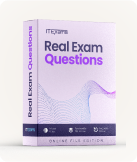Linux Foundation KCNA - Kubernetes and Cloud Native Associate Exam
Page: 1 / 40
Total 199 questions
Question #1 (Topic: Exam A)
What native runtime is Open Container Initiative (OCI) compliant?
A. runC
B. runV
C. kata-containers
D. gvisor
Answer: A
Question #2 (Topic: Exam A)
Which API object is the recommended way to run a scalable, stateless application on your cluster?
A. ReplicaSet
B. Deployment
C. DaemonSet
D. Pod
Answer: B
Question #3 (Topic: Exam A)
A CronJob is scheduled to run by a user every one hour. What happens in the cluster when it's time for this CronJob to run?
A. Kubelet watches API Server for CronJob objects. When it's time for a Job to run, it runs the Pod directly.
B. Kube-scheduler watches API Server for CronJob objects, and this is why it's called kube-scheduler.
C. CronJob controller component creates a Pod and waits until it finishes to run.
D. CronJob controller component creates a Job. Then the Job controller creates a Pod and waits until it finishes to run.
Answer: D
Question #4 (Topic: Exam A)
What is the purpose of the kubelet component within a Kubernetes cluster?
A. A dashboard for Kubernetes Clusters that allows management and troubleshooting of applications.
B. A network proxy that runs on each node in your cluster, implementing part of the Kubernetes Service concept.
C. A component that watches for newly created Pods with no assigned node, and selects a node for them to run on.
D. An agent that runs on each node in the cluster. It makes sure that containers are running in a Pod.
Answer: D
Question #5 (Topic: Exam A)
What is the default value for authorization-mode in Kubernetes API server?
A. --authorization-mode=RBAC
B. --authorization-mode=AlwaysAllow
C. --authorization-mode=AlwaysDeny
D. --authorization-mode=ABAC
Answer: B
